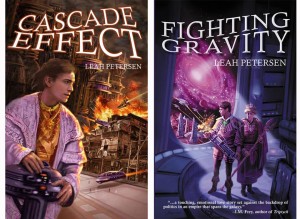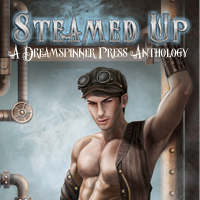Yesterday, I talked about the print materials that I included with the press kit for the first book in my current series. If you want to make an indelible first impression, that’s only a starting point. I’m now going to take it one step further.
I mentioned that you shouldn’t provide a simple press release in a manila folder. That much should be obvious. But if not in a manila folder, what will you use to contain this grab-bag of awesomeness you have assembled? If it’s just paper, you could get some full-colour customized folders. This gets dicey if you’re going to include a physical copy of your book, which I strongly recommended yesterday. (I still strongly recommend it today!)
My needs set me toward finding a box.
1. The box. Not just any box old box. This will be the first thing your box recipient will see. There are places online where you can design and purchase all kinds of beautiful customs boxes, but unfortunately you may find that some of them break the bank. If I had unlimited resources, I would have gone with something like these. The possibilities are endless. My budget meant I had to rely on my wits. With the help of a close family member, I got my hands on thirty white medium-sized pizza boxes. We delicately refitted them so that they were the perfect size for the book, with room on each side for extra materials, opening and closing with a clasp.
This involved a fair bit of work, because the last thing I wanted was to present my press kit in a box that shouted “Cheapskate!” The end result was highly professional. (If you’re interested in exactly how we refitted pizza boxes to look classy, well, that’s a post for another day; let it simply be said, without explaining the mechanics, that it’s quite possible when done with a skilled hand.)
2. The box label. Don’t make the mistake of addressing your box to “Reviewer,” or something equally anonymous. This is not a form letter. Every news outlet is going to have a person (or a department of persons) responsible for deciding what goes on the air, or on the page. Find out who those people are and address the boxes to them personally. In some cases, it may be advantageous to address your kit directly to on-air talent, specific columnists, or people in the organization with whom you have a personal connection. This helps you to control the success of your press kit, so that it doesn’t languish on the front receptionist’s desk for a few days before being dumped in the trash. Make sure it gets in the right person’s hands. In my case, I printed a graphic on the front of the box which identified the recipient; the graphic I chose matched a graphic from the cover of my book, making sure that both the product itself and the box it came in looked like they belonged together.
3. Personal letter. Another personal touch I included was a short letter introducing the book and my marketing effort to the particular recipient. If I knew something about the box’s recipient, this was the place to take advantage of it. Each letter was slightly different from the next, due to its personalized nature. The contents of the letter was a little bit redundant with the press release, except much more intimately presented (no… not that kind of intimate). The letter was printed on a small narrow band of distressed paper, rolled up in a scroll, and tied with a short length of twine. Each was signed by hand. This was designed to be the first item of the kit which was handled by the recipient. It was the figurative opening handshake.
4. An invitation. I included an invitation to my launch, inside a hand-addressed envelope. These invitations were provided to me by the bookstore where my launch was held, saving me a bit of effort. The bookstore’s logo (a major retailer in my city) lent a further air of professionalism and credibility.
5. Goodies. We’re getting to the end now. I wanted to include a couple of extra trinkets, but I didn’t have much time or money. Ideally, your goodies should be a specific complement to your book. I didn’t have quite enough time to prepare something as cool and intricate as I would’ve liked, so I settled for customized pens and notepads. I designed and ordered these through a local printing company, and I got an excellent deal. The pen and notepad contained my book title, my series title, and my official website. I distributed these pens far and wide, and every once in a while I still see them out in the world when I go to the bank or visit a local restaurant. I also used these pens at my signing; for each book I signed, I used a unique pen, and then gave away the pen to the person buying the book.
Finally, a note about packaging: if you go this route, of preparing and filling a box, make sure it packs tightly. The last thing you want is for the contents of the box to be messy when it’s opened by its intended recipient. Pack it in such a way that it can be turned on its side and flipped around a few times without disturbing what’s inside.
I sent my finished kit to radio stations, newspapers, magazines, bloggers, libraries, and a few prominent local authors who I hoped might lend some support. The final result is that I received responses from just less than half of the people I sent it out to. Considering that I was a first-time author with virtually no platform or publishing history, I believe that was a really big success. I’m hoping that by repeating this effort, my response will improve with every release.
I hope my experience and advice has been helpful. All the best in preparing your own press kits, and if you have questions, leave them in the comments!
 I jest, because there are a lot of people who have paved the way ahead of you and they’ve got some good advice. I’m probably not one of them, but just in case, I’m going to talk about contests.
I jest, because there are a lot of people who have paved the way ahead of you and they’ve got some good advice. I’m probably not one of them, but just in case, I’m going to talk about contests. I’m a sci-fi and fantasy author, the first two novels in The Physics of Falling trilogy, Fighting Gravity and Cascade Effect are available now! I pride myself on being able to hold a book with my feet so I can knit while reading. I live in North Carolina. I do the day-job, wife, and mother thing, much like everyone else. You can also find me on Twitter: http://twitter.com/LeahPetersen
I’m a sci-fi and fantasy author, the first two novels in The Physics of Falling trilogy, Fighting Gravity and Cascade Effect are available now! I pride myself on being able to hold a book with my feet so I can knit while reading. I live in North Carolina. I do the day-job, wife, and mother thing, much like everyone else. You can also find me on Twitter: http://twitter.com/LeahPetersen

